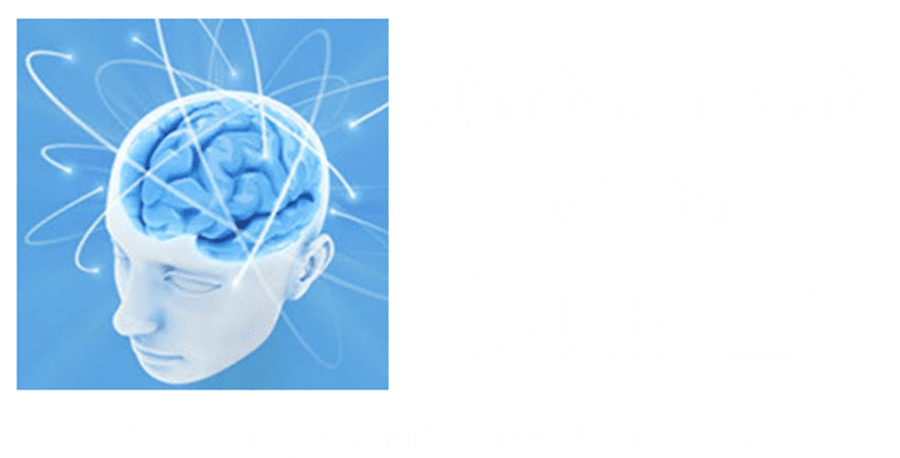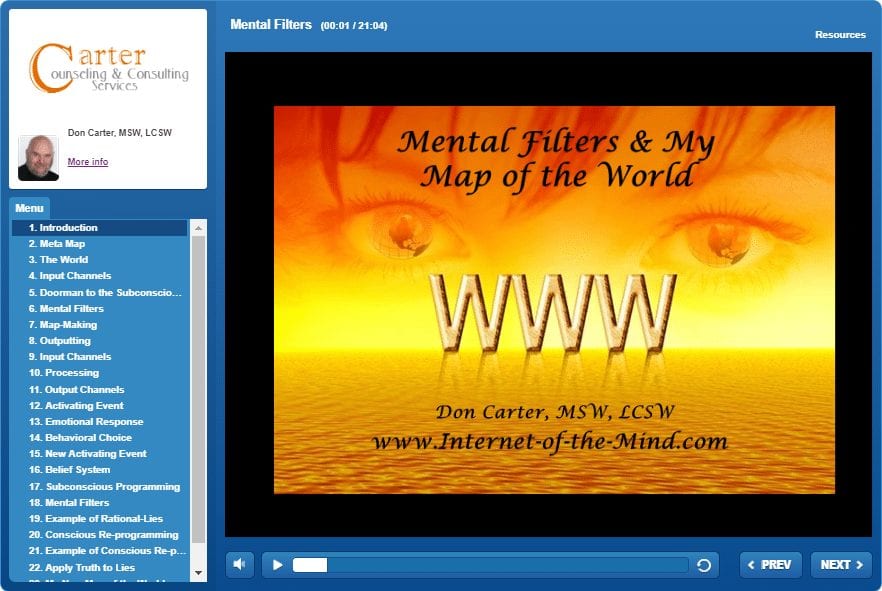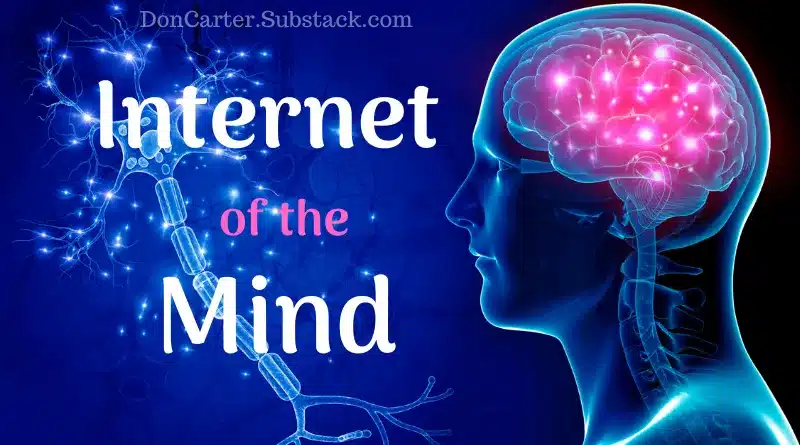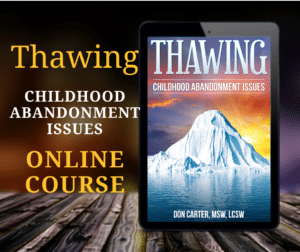
How Thought Creates Reality
Our thought creates reality through functions and processes of a brain that is our faithful servant. Human beings are meaning-makers and information processors. We are compelled to make sense of the world around us.
How Our Subconscious Mind Creates “Reality”
Click Here to See More Online Courses
How Thought Creates Reality – The Long Version
The first thing that we must be able to do is to take in raw sensory data from “the World? – anything outside of my own skin. Most people have use of five Input Channels to receive raw sensory data from the world around us…
- Visual (sight)
- Auditory (sound)
- Kinesthetic (touch)
- Olfactory (smell)
- Gustatory (taste).
At any given moment there are somewhere in the neighborhood of two million bits of sensory data trying to make their way into the subconscious mind.
The subconscious mind can only process about 40,000 bits of incoming data per second so incoming data must be sorted into two categories – that which is important to me… and that which is NOT important to me. Unimportant data gets deleted by the Reticular Activating System (RAS) – the proverbial in-one-ear-and- out-the-other!
Think of the RAS as the doorman of the subconscious mind. It sorts out and allows in those data which are important to me and screens-out those data which are not. The RAS uses three universal brain processes – Generalization, Deletion, and Distortion – to complete the sorting and selection of data for input.
So you ask… “how does the doorman know which data is important to me?”
We have several primary Mental Filters that tell the doorman of our subconscious mind what’s important to us (see diagram above)…These filters are…
- My Sense-of-Self or Identity – How I see myself… what I think of myself… how I feel about myself.
- My Values – Things that are most important to me…these are usually just beneath the surface of our awareness if we have never taken the time to sort them out, but they are very powerful motivators of our choices and our behaviors.
- My Strongly-Held Beliefs – Right or wrong…good or bad…helpful or limiting…these are the beliefs we hold about ourselves, other people, life, and the world in general. They are keys to how thought creates reality.
- My Memories and Experiences – Every significant emotional event… pleasant or unpleasant is stored on the hard-drive of our subconscious mind.
- My Programs – Over 90% of our actions and reactions in a given day are carried out automatically by neural networks in our brain.
- My Survival Needs – Of all the brain processes survival is given the highest priority… so anything related to our survival goes to the head of the line for processing by the brain.
Thought Creates Reality – The Power of Belief
Beliefs are perhaps the most influential filters of them all. A strongly-held belief creates a strong emotional state. My current belief and resulting emotional state tell my doorman “what’s important to me”.
We have:
- Beliefs about our identity
- Beliefs about our values
- Beliefs about our beliefs
- Beliefs about our experiences
- Beliefs about our programs
- Beliefs about our ability to survive.
A strongly-held belief can become a self-fulfilling prophecy because thought creates reality… It’s like my faithful servant doesn’t want to make a liar out of me so it helps to prove that my belief is true by sorting for and creating examples of it in my life. So be careful about what you say when you talk to yourself!
Once you become self-aware your thought creates the reality of success in your life by re-programming the limiting beliefs that hold you back and replacing them with ones that reflect what you want. Learn more about changing limiting beliefs in the sections on Cognitive-Behavioral Therapy and NLP.
Below is an example of how thought creates reality by sorting for data in a way to create a self-fulfilling prophecy.
How Thought Creates Reality – Fictitious Example
- John comes in for a counseling session, He states his main concern is that he is “not worth caring about”… The counselor notices that John has been married for 15 years… He asks, “what about your wife, doesn’t she care about you?”
- John says, “No, she doesn’t care about me either and ever since I can remember no one has ever cared about me. I’ve resigned myself to the fact that I?m just not worth caring about.”
- The counselor has trouble accepting this. He asks John, “I?d like to come and stay at your house over the weekend just to observe and see for myself if your wife really doesn’t care about you.”
- John agrees to allow this. The weekend comes and goes. John and the counselor meet in session the following week…
- The counselor opens by saying, “John, I counted a total of 63 caring messages from your wife to you over the weekend”. John says, “Your kidding – I didn’t even hear one!”
- The counselor plays a tape recording he’d made – Sure enough, there were 63 messages that could be considered caring from John?s wife to him on the recording.
- John?s response… “Oh, she just wanted something!”
The generalization was John’s strongly held belief, “I’m not worth caring about”.
Any incoming caring messages – visual, auditory (hearing) or kinesthetic (touch) – that did not support the belief were deleted by John… They went “in-one-ear-and-out-the-other”. But John could NOT delete the messages on the tape recording… So, his “doorman” distorted them to fit his belief with a defense mechanism… rationalization, in this case.
The end result was that the brain processes of generalization, deletion, and distortion helped John sort for the data that would support his strongly held belief that he isn’t worth caring about.
Thought Creates Reality “Movies”
Once the carefully selected data makes it through the door… into the subconscious mind… the thalamus then sorts and packages the raw hear-see-feel data into a coherent form. A good analogy is to think of it as producing a movie in our mind. This movie has a visual track, a soundtrack, a touch track, and sometimes a smell track and taste track.
Here is an example of a mental movie:
- The smell of wet dog lingers in the air as Rover trots his muddy feet across the new carpet in the living room leaving a wet spot on your new slacks as he brushes your leg on his way to the kitchen for a drink of water from his silver bowl in the corner of the room…you can hear the sound of his toenails on the linoleum floor as he circles his bed a few times before lying down for a late afternoon nap.
Now, I’ll go out on a limb here and say that the mental “movie” created by this group of words is different for every single person who reads them.
How many people saw…
- The same dog
- in the same house
- with the same color carpet
- the same muddy footprints
- wearing the same slacks
- seeing the same kitchen
- hearing the same sounds
- Etc.
Our subconscious mind used information from the “database” of our experience to fill in the gaps. This explains why when three people witness an accident, they give three separate stories of what happened. Our subconscious mind doesn’t like gaps and will fill them in as independent thought creates reality in a slightly different way for each of us.
Organizing the data into a movie form allows us to step back and re-present to ourselves “what just happened” so we can begin to make sense of it… We experience various emotional states based upon these mental movies we watch…
- If I feel depressed I am watching a tragedy
- If I feel anxious I may be watching a suspenseful drama
- If I am feeling scared I may be watching a horror flick
- If I am bored I may be watching an uninteresting documentary
This is why sensory input channels are referred to as representational systems in the field of Neuro-Linguistic Programming (NLP).
A key point to remember – Our subconscious mind produces these movies with biased or skewed data… filtered data that support what we already “know” and believe, creating a self-fulfilling prophecy. The result is more mental movies that support and strengthen our internal DVD Library of experiences regarding our identity, values, beliefs, memories, programs, and survival needs.

People tend to believe what they experience and they tend to experience what they believe. Because their own thought creates reality.
This filtering of biased data results in our personal perceptions of reality – also known as subjective experience – My Map of the World. The movies are examples of how thought creates reality – subjective reality – There is no such thing as objective reality.
Objective reality would require that we take into account all available data? something that human beings cannot do because our brain processes only 40,000 bits of the incoming 2,000,000 bits of data per second…the rest is screened-out… This makes “objective reality” impossible for human beings. The best we can hope for is to be open-minded… a pre-requisite to learning something new.
Something to consider… At last count, there were somewhere near 7 billion people in the world… How many of those 6 billion people have EXACTLY the same values, belief, memories, experiences, programs, and survival needs?? That’s right…none of us have exactly the same filters which means there are currently somewhere around 7 billion maps of reality!
So…who has the correct map?
The answer is everyone has the correct map – for themselves… And none of us have a completely accurate map of “reality”. So, as individuals we really are unique – truly one-of-a-kind.
Thought Creates Reality – Outputting Data
A key to understanding how thought creates reality are para-messages.
Para-messages are nonverbal communications sent through body language… the tone of voice, facial expression, posture… Over 90% of what we communicate to each other is through para-messages.

The conscious mind can miss these data entirely, but the subconscious mind doesn’t miss a trick. So, through subconscious perception we pick up on his/her signals – again thought creates reality. So what are the implications of all this? Perhaps another example will explain… Let’s look at the condition called codependency.
If someone has codependency then their doorman (RAS) is programmed to screen for data that will support their codependent values… codependent beliefs… codependent memories and experiences… codependent programs… and codependent survival skills. Codependent thought creates reality by attracting the right people who know how to dance the dance.
Their codependent mental filters may look like this:
- Identity – I’m not good enough, I’m less important than others
- Values – doing for others, self-sacrifice, making a good impression, staying busy
- Beliefs – I’m not good enough… others are more important than I am… I must always please others… if I say no you will go away and not come back.
- Memories – abandonment experiences, memories of abuse, shaming experiences
- Programs – care-taking, rescuing, controlling, the outcomes, fixing others, etc
- Survival Skills– approval seeking, don’t feel, don’t talk, don’t trust, etc.
Let’s say that this person has somehow ended her most recent codependent relationship. She is currently looking for a new partner.
She walks into a room full of 50 available men… Only one of them is alcoholic. The other 49 are all very healthy. Who do you think she ends up with? That’s right – because thought creates reality she soon finds herself wrapped up with another alcoholic partner. She asks herself… “How does this keep happening to me… Do I have a stamp on my forehead, or what!?”
No, she doesn?t have a stamp on her forehead – she has radar at the base of her skull called the reticular activating system (RAS)… and all her filters are set for codependency. It can be no other way because that’s how her “map of the world”… her neural network for relationships or “Love Map” is set-up.
When she walked into the room her doorman began sifting through 2 million bits of data per second – allowing in only that data which fits her codependent neural network. Consciously she had no intention of coming anywhere close to another problem-person… Consciously she is looking for Mr. Right and the happily-ever-after scenario.
It just so happens that a person with a codependent map is extremely compatible with someone who has a map for alcoholism or other similar dysfunction… So, his mental filters draw him to her just as she is drawn to him. Her “Love Map” subconsciously synchronizes with his and they dance the only dance they know… Until someone has a wake-up call and begins to change their tune.
In helping people recover from codependency there almost always seems to be “that one person” in their past who treated them very well and seemed to be very healthy. When I ask how long that relationship lasted they frequently say “only a few weeks”… When I ask what happened, the answer is always something like “we just didn’t click” or “I got bored”.
Things that make you go – “Hmmmmm…”
Whether it is Codependency, Addiction, Chronic Depression, or Anxiety and fears – Our brain filters data in ways that help us create self-fulfilling prophecies and self-reinforcing cycles. The thing to do is understand how thought creates reality and develop a way of thinking…or filtering data…that helps us create the life we want! The only way I know of to do that is to establish a new steady-state called Recovery.






